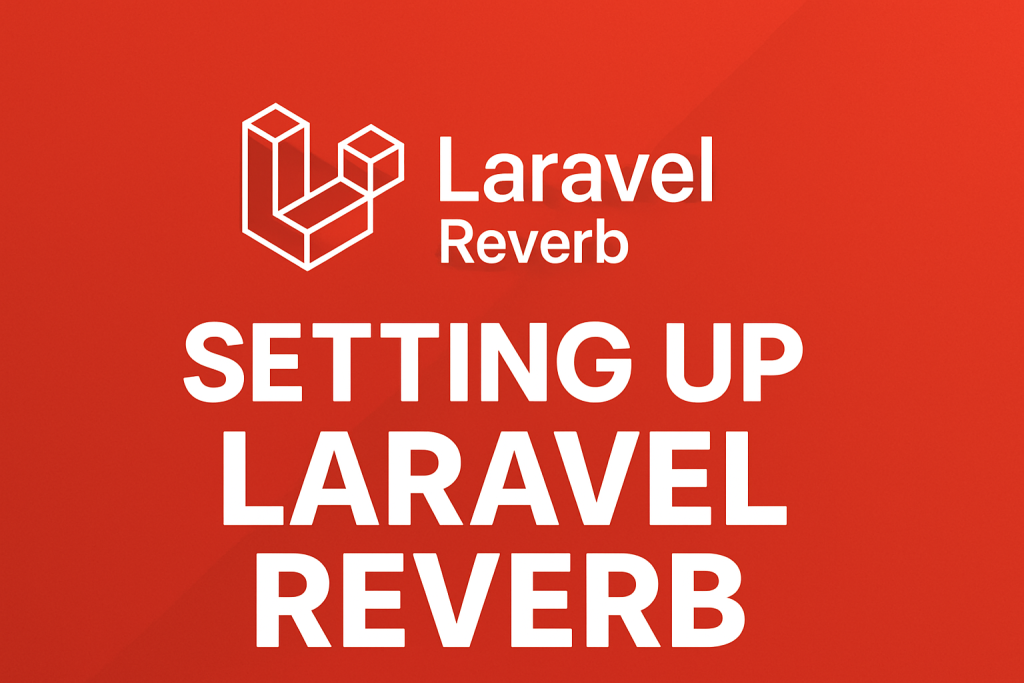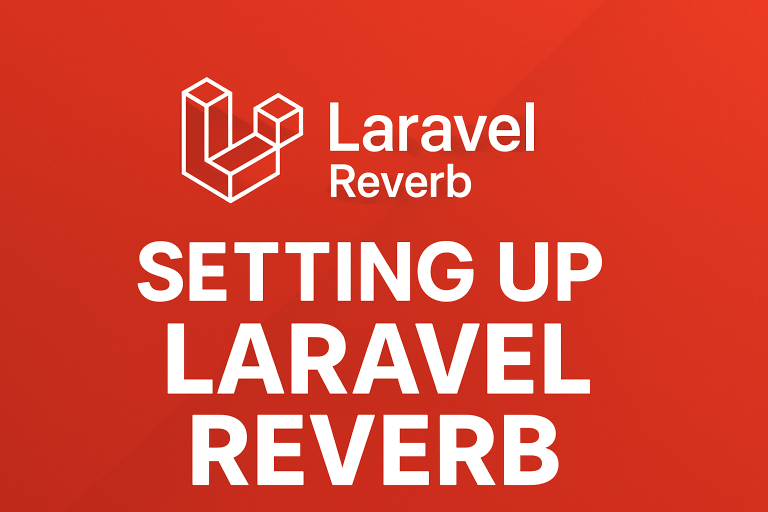
Laravel Reverb is a robust real-time event broadcasting solution for Laravel applications. It integrates seamlessly with Laravel's existing event system, enabling real-time communication via WebSockets. Here's a step-by-step guide to get you started quickly.
You can also check out example on Github laravel-reverb-broadcasting
Step 1: Set Up Laravel Project
First, ensure Laravel is installed. If not, create a new Laravel project:
composercreate-projectlaravel/laravelreverb-demo
cdreverb-demoStep 2: Install Laravel Reverb
Add Laravel Reverb to your project:
composerrequirelaravel/reverbPublish Reverb's configuration file:
phpartisanvendor:publish--provider="Laravel\Reverb\ReverbServiceProvider"Step 3: Configure Environment
Update your .env file to use Reverb:
BROADCAST_DRIVER=reverb
REVERB_APP_ID=your-app-id# random-value
REVERB_APP_KEY=your-app-key# random-value
REVERB_APP_SECRET=your-app-secret# random-value
REVERB_HOST=127.0.0.1
REVERB_PORT=8080
REVERB_SCHEME=http
VITE_REVERB_APP_KEY="${REVERB_APP_KEY}"
VITE_REVERB_HOST="${REVERB_HOST}"
VITE_REVERB_PORT="${REVERB_PORT}"
VITE_REVERB_SCHEME="${REVERB_SCHEME}"Step 4: Install Broadcaster
Run this command to install reverb broadcaster
phpartisaninstall:broadcastingthen type 'reverb' in command line, and choose 'yes' on next step.
Step 5: Run Laravel Reverb Server
Start the Reverb WebSocket server:
phpartisanreverb:startEnsure broadcasting.php is set correctly (it should already reference Reverb by default):
Step 6: Create an Event
Generate a new event class:
phpartisanmake:eventMessageSentExample event setup (MessageSent.php):
<?php
namespace App\Events;
use Illuminate\Broadcasting\Channel;
use Illuminate\Broadcasting\InteractsWithSockets;
use Illuminate\Contracts\Broadcasting\ShouldBroadcastNow;
use Illuminate\Foundation\Events\Dispatchable;
classMessageSentimplementsShouldBroadcastNow
{
useDispatchable,InteractsWithSockets;
/**
* Create a new event instance.
*/
publicfunction__construct(publicstring$message)
{
//
}
/**
* Get the channels the event should broadcast on.
*
*@returnarray<int, \Illuminate\Broadcasting\Channel>
*/
publicfunctionbroadcastOn():Channel
{
returnnewChannel('chat');
}
}
Step 7: Trigger the Event
Fire your event from anywhere in your Laravel application:
event(new\App\Events\MessageSent('Hello Reverb!'));Step 8: Client-side Integration
To receive broadcast events, set up your frontend with Laravel Echo:
Install Echo and Pusher (used by Echo to connect to Reverb):
npminstalllaravel-echopusher-jsConfigure Echo (resources/js/echo.js):
importEchofrom"laravel-echo";
importPusherfrom"pusher-js";
window.Pusher=Pusher;
window.Echo=newEcho({
broadcaster:"reverb",
key:import.meta.env.VITE_REVERB_APP_KEY,
wsHost:import.meta.env.VITE_REVERB_HOST,
wsPort:import.meta.env.VITE_REVERB_PORT??80,
wssPort:import.meta.env.VITE_REVERB_PORT??443,
forceTLS: (import.meta.env.VITE_REVERB_SCHEME??"https")==="https",
enabledTransports: ["ws","wss"],
});
window.Echo.channel("chat").listen("MessageSent",(e)=>{
console.log(e.message);
});
Run your frontend:
npmrundevThat's It!
You've successfully set up Laravel Reverb and configured basic event broadcasting. Now, your Laravel app can utilize powerful real-time features!
Reference Links
Github Repo: laravel-reverb-broadcasting

